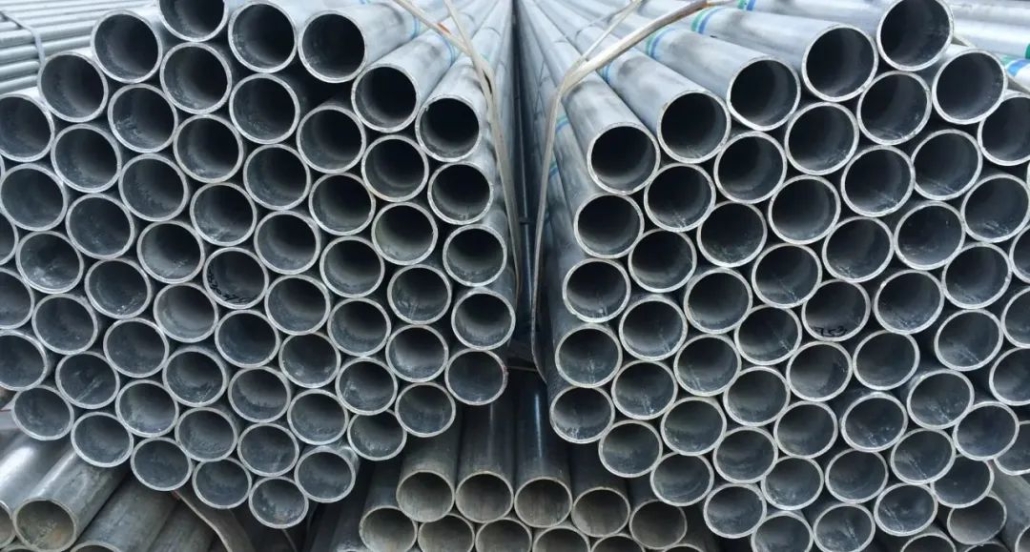Heating oxidation defects and control of galvanized steel pipe heating furnace
Oxidation means that when steel is heated, it is oxidized to form iron oxide scale due to the action of CO2, H2O, O2 in the furnace gas. Approximately 0.5%-3% of the steel is oxidized to form iron oxide scale every time it is heated ( That is, burning loss), which reduces the yield rate. At the same time, the accumulation of iron oxide scale on the furnace bottom will cause erosion of the refractory material and reduce the service life of the furnace. In addition, the thermal conductivity of iron oxide scale is much lower than that of metal, which affects the heating of steel billet.
(1) Steel pipe temperature The oxidation of steel is not severe before the temperature reaches 800°C, and the change speed of the tube blank temperature is obviously accelerated when the temperature of the tube blank reaches above 800°C;
(2) High temperature residence time The longer the tube blank stays in the high temperature zone, the more serious the oxidation and burning damage will be;
(3) The richer the oxidizing atmosphere in the furnace gas, the more serious the oxidation and burning loss will be.
The ratio of the influence of the above three is basically 6:3:1.
High-pressure water descaling on the heat treatment line of galvanized steel pipes. During the heat processing process of steel, the surface of the steel parts will be oxidized to varying degrees depending on the heating temperature and the length of time, and oxide scales of different thicknesses will be formed. In order to improve the surface quality and dimensional accuracy of steel pipes, a high-pressure water descaling process is used to remove oxide scale during the hot rolling process of steel pipes.
During the heat treatment and heating process, oxide scale will also be formed on the surface of the steel pipe. Adding a high-pressure water descaling process has the following advantages:
(1) Like the rolling process, the high-pressure water descaling process can significantly improve the surface quality of the steel pipe;
(2) After the steel pipe is descaled and the oxide scale is removed, the steel pipe is cooled evenly and heat exchange is accelerated during quenching, which can reduce the quenching deformation of the steel pipe and increase the cooling rate;
(3) During the straightening process of the steel pipe after heat treatment, the steel pipe will produce a large friction force on the straightening roller and cause roller wear. If there is oxide scale on the surface of the steel pipe, the wear process will be accelerated, and descaling will Can reduce roller wear;
(4) Non-destructive testing is required after heat treatment of steel pipes. If there is oxide scale on the surface, it will affect the flaw detection effect. In severe cases, flaw detection will be impossible. The descaling process can avoid this situation.


اترك رداً
تريد المشاركة في هذا النقاششارك إن أردت
Feel free to contribute!